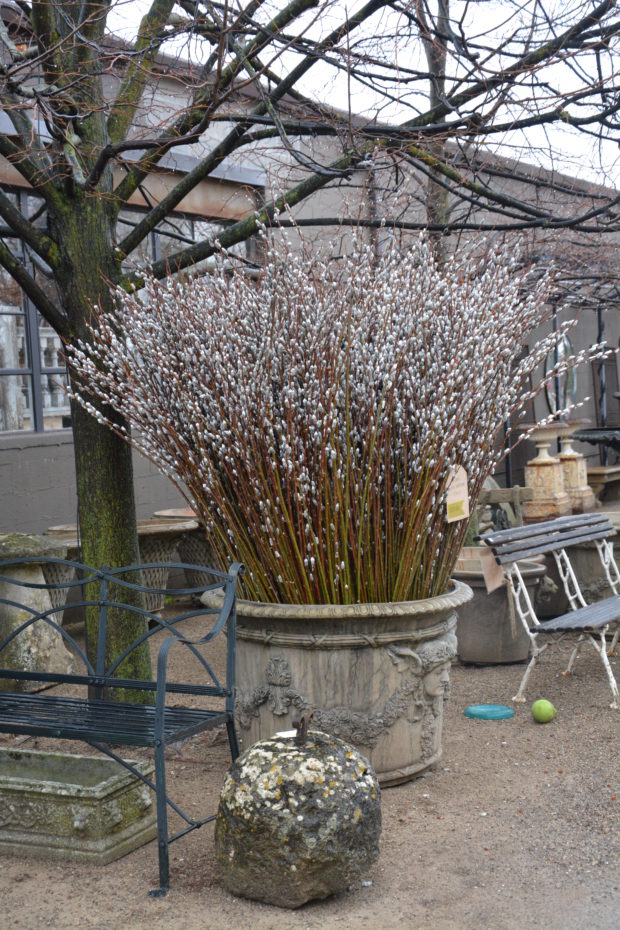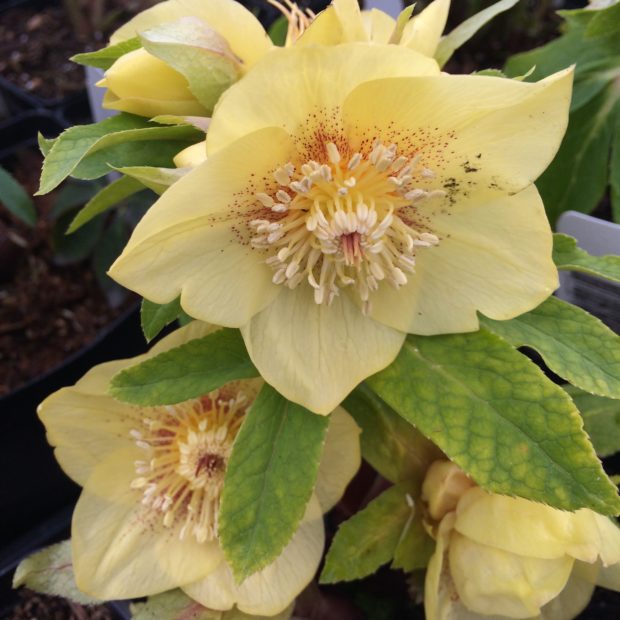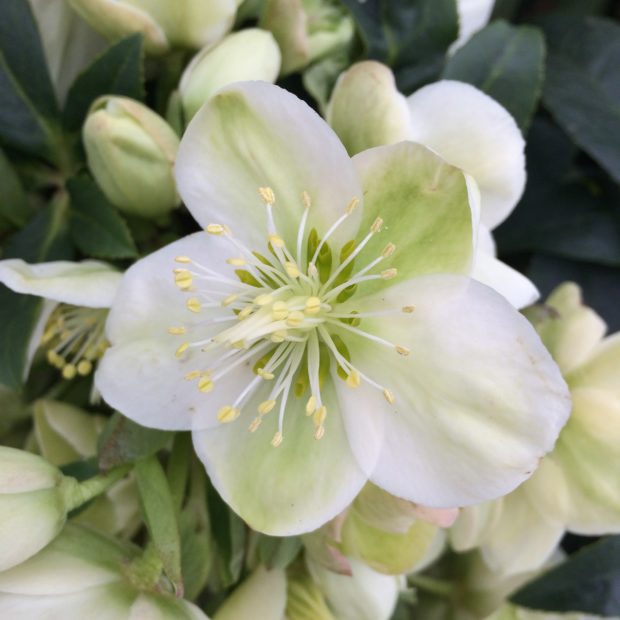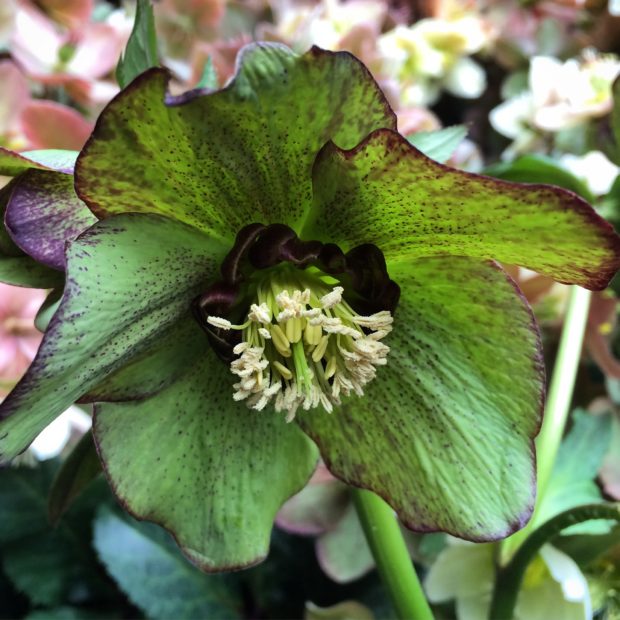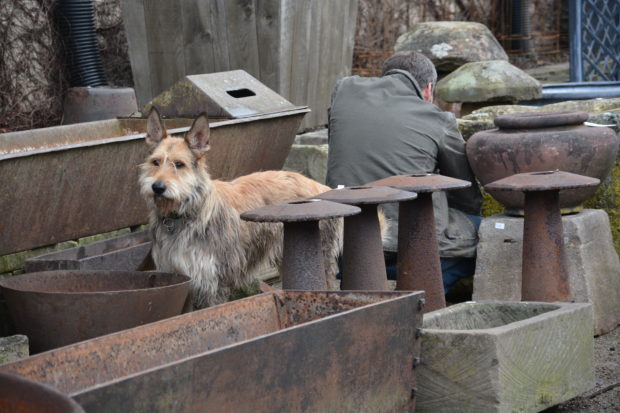 Detroit Garden Works retreats into a semi-closed state from January 15 until the first of March. During that time we do repairs, repaint, clean, and rearrange. An over simplified outtake on of law of nature we call entropy posits that everything tends to fall apart. Anyone who has ever had a garden, a washing machine or a favorite pair of boots understands how true this is. So every winter we take on a building maintenance project of one sort or another. 10,000 square feet and everything we have in it is a lot to keep clean and in working order. Once that is done, we rearrange every room to include all of the new things for spring that have been coming in since last September. That is an incredibly labor intensive and time consuming job, but by March 1, the shop will have that spring fresh look to it. I know we are just about ready for opening day when Rob is out photographing.
Detroit Garden Works retreats into a semi-closed state from January 15 until the first of March. During that time we do repairs, repaint, clean, and rearrange. An over simplified outtake on of law of nature we call entropy posits that everything tends to fall apart. Anyone who has ever had a garden, a washing machine or a favorite pair of boots understands how true this is. So every winter we take on a building maintenance project of one sort or another. 10,000 square feet and everything we have in it is a lot to keep clean and in working order. Once that is done, we rearrange every room to include all of the new things for spring that have been coming in since last September. That is an incredibly labor intensive and time consuming job, but by March 1, the shop will have that spring fresh look to it. I know we are just about ready for opening day when Rob is out photographing.
 The landscape crews forego the lion’s share of their winter off to participate in re-imagining the shop for the coming season. This involves lots of patience moving fragile items, lots of sheer manpower for those incredibly heavy and awkward things, and plenty of attention to detail. I will confess to asking to move some things around multiple times until I feel the design of it reads right to me. In better than 20 years, I have yet to hear a complaint. At that moment when I am too worried that a direction I have chosen will not work out, Marzela has been known to tell me that that we have it all in hand.
The landscape crews forego the lion’s share of their winter off to participate in re-imagining the shop for the coming season. This involves lots of patience moving fragile items, lots of sheer manpower for those incredibly heavy and awkward things, and plenty of attention to detail. I will confess to asking to move some things around multiple times until I feel the design of it reads right to me. In better than 20 years, I have yet to hear a complaint. At that moment when I am too worried that a direction I have chosen will not work out, Marzela has been known to tell me that that we have it all in hand.
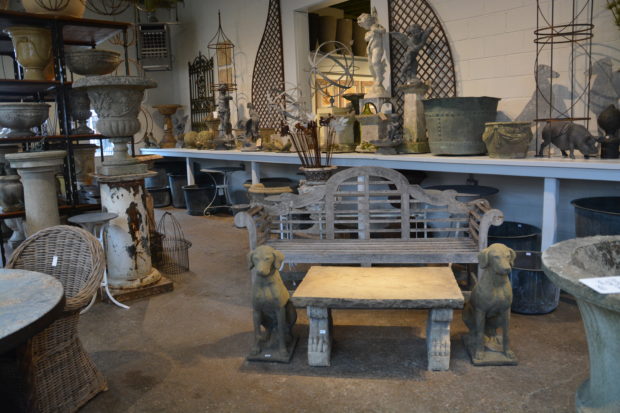 It is hard to describe the process by which we turn over a past season to a new one. It is a big fluid situation. Every year, I am surprised by how a small group of people manage to transform the atmosphere of a big space from what was past to the present. The entire process from the patching and painting to the finish runs between 3 and 4 weeks. My job as a designer has a yearly winter project that goes on in my own house.
It is hard to describe the process by which we turn over a past season to a new one. It is a big fluid situation. Every year, I am surprised by how a small group of people manage to transform the atmosphere of a big space from what was past to the present. The entire process from the patching and painting to the finish runs between 3 and 4 weeks. My job as a designer has a yearly winter project that goes on in my own house.
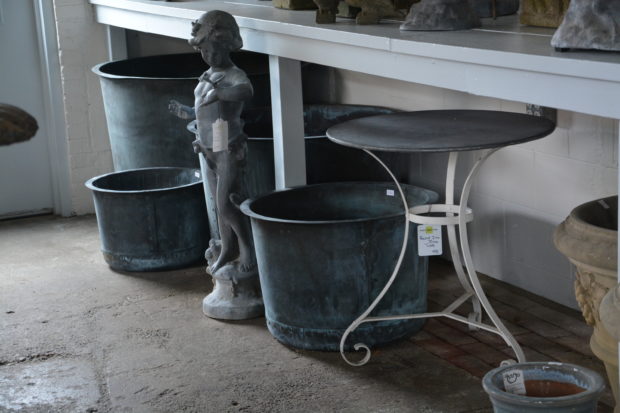 Detroit Garden Works has been in business going on 21 years. We are in the midsection of the country, 30 miles north of Detroit. That geography may define what plants we are able to grow, but it by no means defines or confines our vision of the garden to the midwest. This means that a gardener who plants herbs in a vintage wood crate is just as likely to find something for their garden as the person who values the clean lines of a contemporary garden pot. Gardeners are a very diverse lot, and what Rob buys for the shop reflects that.
Detroit Garden Works has been in business going on 21 years. We are in the midsection of the country, 30 miles north of Detroit. That geography may define what plants we are able to grow, but it by no means defines or confines our vision of the garden to the midwest. This means that a gardener who plants herbs in a vintage wood crate is just as likely to find something for their garden as the person who values the clean lines of a contemporary garden pot. Gardeners are a very diverse lot, and what Rob buys for the shop reflects that.
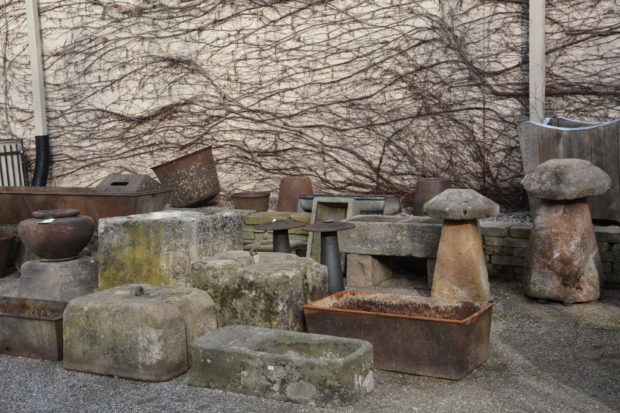 This group of stone troughs, sinks, and staddle stones that Rob purchased in England this past September are all better than 100 years old, and are covered in lichen colonies that speak to their great age. The large stones with iron rings in the center are cheese stones, that were used to squeeze excess water out of the cheese by virtue of their sheer weight. Though their history is agricultural, their effect in a garden is sculptural.
This group of stone troughs, sinks, and staddle stones that Rob purchased in England this past September are all better than 100 years old, and are covered in lichen colonies that speak to their great age. The large stones with iron rings in the center are cheese stones, that were used to squeeze excess water out of the cheese by virtue of their sheer weight. Though their history is agricultural, their effect in a garden is sculptural.
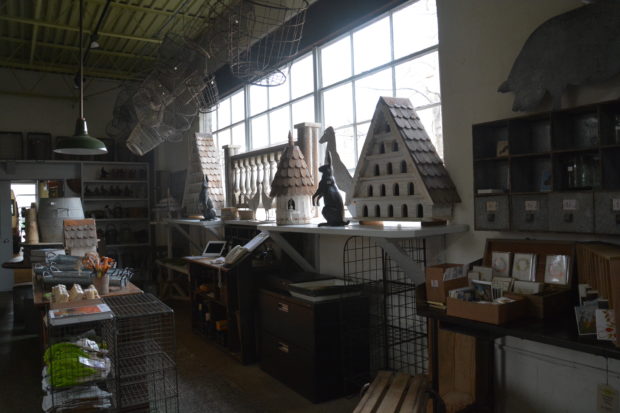 A collection of English made wood birdhouses in a traditional style are as whimsical as they are utilitarian.
A collection of English made wood birdhouses in a traditional style are as whimsical as they are utilitarian.
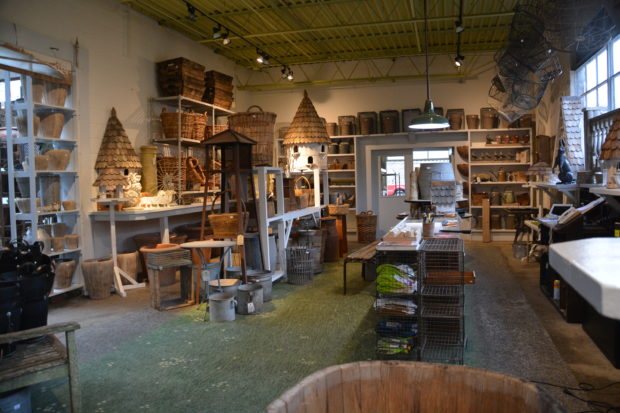 A collection of baskets, chimney stones, wood grape crates, galvanized buckets and steel bird and dog cutout sculptures complete one part of the 2017 collection.
A collection of baskets, chimney stones, wood grape crates, galvanized buckets and steel bird and dog cutout sculptures complete one part of the 2017 collection.
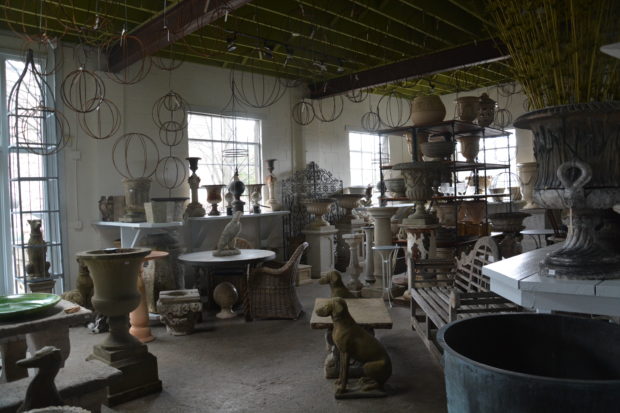 Another room is full of classical antique and vintage urns, benches, tables, sundials, and sculpture. Any of these garden ornaments would compliment a traditional garden. It is just as likely that any one of them could organize or define the mood of a garden.
Another room is full of classical antique and vintage urns, benches, tables, sundials, and sculpture. Any of these garden ornaments would compliment a traditional garden. It is just as likely that any one of them could organize or define the mood of a garden.
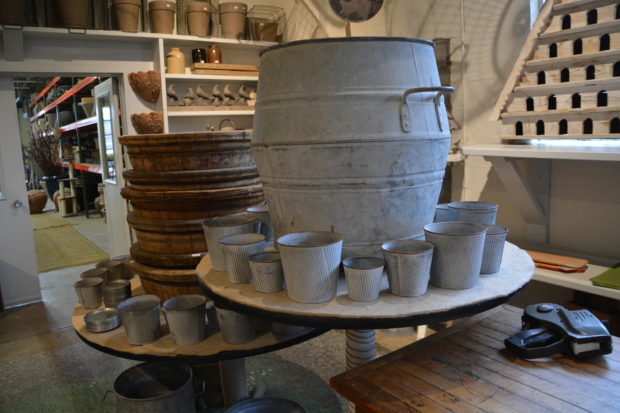 Objects for the garden can set a tone, create a mood, or organize a space. It only takes a gardener who is interested to take their garden to that level. A garden ornament may be dear, or not. What gives it an aura is the selection and placement of a gardener who who has something else to express about a garden that means much to them.
Objects for the garden can set a tone, create a mood, or organize a space. It only takes a gardener who is interested to take their garden to that level. A garden ornament may be dear, or not. What gives it an aura is the selection and placement of a gardener who who has something else to express about a garden that means much to them.
Of course, our shop would be incomplete without plants. At this very early stage of thje season, we do have fresh cut pussy willow twigs, both straight and branches. And a collection of fan willow. The stars of our March season are the hellebores. By far and away, they are the mainstay of the early spring perennial garden. Our collection this year numbers close to 1500 plants, in various sizes. We carry named varieties, and a large collection of the justly well known Pine Knot Farms hellebore strains. How pleased we are to be able to offer these hellebores for the first time.
 For those of you too far away to see our collection in person, we can take pictures, and we do ship. And by all means enjoy the following pictures that Rob has taken of individual plants. It is just about impossible for me to pick a favorite. That could account for the fact that I have lots of them in my garden. A hellebore purchased now will be perfectly happy in a light and cool spot until it can be planted outdoors the beginning of April. This early dose of spring is so welcome. It could be that the best part of the winter landscape is the beginning of the end of winter.
For those of you too far away to see our collection in person, we can take pictures, and we do ship. And by all means enjoy the following pictures that Rob has taken of individual plants. It is just about impossible for me to pick a favorite. That could account for the fact that I have lots of them in my garden. A hellebore purchased now will be perfectly happy in a light and cool spot until it can be planted outdoors the beginning of April. This early dose of spring is so welcome. It could be that the best part of the winter landscape is the beginning of the end of winter.
